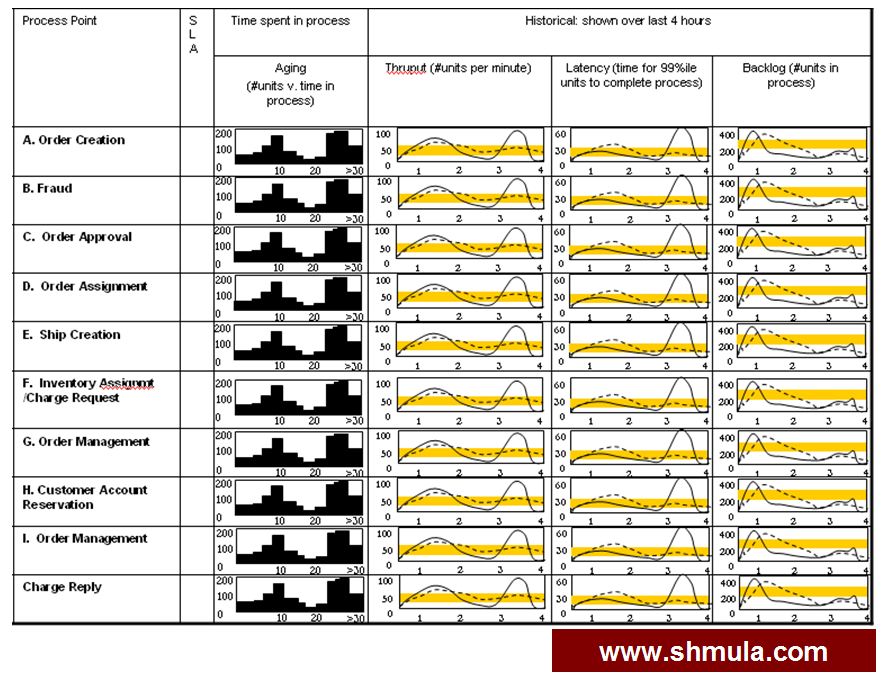It’s critically important in any transaction to be able to answer the question where’s my stuff or where are we in the process? This requirement is often referred to as Traceability and Visibility; sometimes, people refer to this overall process as Click-to-Ship. I prefer to call it eCommerce Order Fulfillment Pipeline: Black Holes and Supply Chains.
Almost all transactions have Traceability and Visibility as a requirement. From the customer’s perspective, they ought and need to know the status of the transaction. The company, then, needs to provide feedback and status to the customer whenever she needs it. Take, for example, the following transaction types:
- Library Book Check-out: User physically searches for books; user check books out; for each book checked-out, there is a 10 business day expiration date; when there is 2 days left in the check-out timer, an email notification is fired to the customer as a reminder.
- Online Subscription: User follows the sign-up process; user pays with credit card; credit card is verified; user is admitted to full subscription access page; an email is sent, notifying the customer of the amount charged on credit card and that the transaction was successful.
- Online Ordering System: User searches online; user selects items and places items in shopping cart; user pays with credit card; credit card is verified and an email is sent to notify the customer the amount charged and the items bought and an estimate of when the items will be delivered.
- You order the #4 meal at McDonald’s; you wait for a really long time and nobody behind the counter comes to tell you the status of your order.
- etc., etc.
We’ve all experienced transactions where a notification is sent and feedback is delivered to help us know exactly where we are in the process and, for hard-good transactions, where our stuff is and when we’ll receive it.
Traceability and Visibility
But, there are some processes where Traceability and Visibility are not available. Often, we hear of statements like I entereed my credit card number and nothing happened. It felt like a black hole. Statements like this point to the fact that users’ need to know status and receive feedback ” they want to be involved in the transaction.
Diagramming Traceability and Visibility
Below is a hypothetical map of what an order system might look like. This system involves a front-end store, credit card verification, and warehousing activities:

Because time is an element in any process, we can collect time-based data and, because the time-based data can be approximated by a statistical distribution, we can approximately predict when the transaction enters a process and when it might exit the process; this line of argument can be extended from start-to-end and this type of traceability and visibility allows the firm to provide accurate feedback and status to the customer.
But, it also allows the firm to do something else: it allows the firm to collect natural metrics and then improve its operations. For example, if we see a large backlog and items begin to queue in front of a process, that might signal management to transfer labor to that process to drive-down the backlog, or for management to implement improvements in front of that process so that items don’t queue there in the future. The ability to make improvements is only possible when we can follow and visually see the how the process and operation is performing.
Do you know how your company is performing? Is your operation a black hole to the customer?









Great points of the frustration of encountering a black hole.
I also particularly liked your nominal chart. It’s a great example of what Edward Tufte calls “small multiples” and how proper design can allow us to easily understand and comprehend charts that are also data rich. That is, much of what it takes to communicate is good message design, not overly simplifying the message.
Also, good point about using the measure of the queue as a signal to take action. That can happen far faster than using cycle time as the signal because of the time lag. (Classic Queuing Theory–great stuff.)